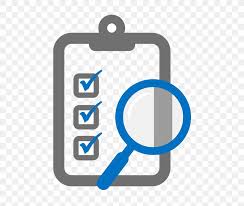Unlocking Business Growth Through Strategic Customer Relationship Management (CRM) Implementation
In today's competitive business environment, a robust Customer Relationship Management (CRM) system is no longer a luxury but a necessity for sustainable growth. A well-integrated CRM empowers organizations to streamline operations, personalize customer experiences, and significantly enhance profitability. This comprehensive guide provides a strategic roadmap for successful CRM implementation, transforming customer interactions and driving business growth. We will explore the critical phases, ensuring a seamless transition and maximizing return on investment (ROI). Key concepts such as the Technology Acceptance Model (TAM), which explains technology adoption based on perceived usefulness and ease of use, and the Resource-Based View (RBV), which highlights the importance of leveraging organizational resources for competitive advantage, will frame our discussion.
A Strategic 15-Step CRM Implementation Framework
The foundation of a successful CRM implementation lies in clearly defined goals and a meticulous execution plan. This 15-step guide offers a structured approach, ensuring a smooth transition and optimal outcomes. Each step builds upon the preceding one, creating a robust and effective CRM system tailored to specific organizational needs.
1. Defining Strategic Objectives and Measurable KPIs: A SMART Approach
Prior to CRM implementation, meticulously define specific business objectives. What quantifiable results are sought? Increased customer lifetime value (CLTV)? Improved customer satisfaction (CSAT) scores? Higher conversion rates? Clearly defined, measurable Key Performance Indicators (KPIs) provide a framework for evaluating success and guiding the implementation strategy. These KPIs must adhere to the SMART criteria – Specific, Measurable, Achievable, Relevant, and Time-bound. This aligns with the goal-setting theory, emphasizing the importance of clear, measurable goals for motivating and guiding behavior.
2. Strategic Vendor Selection: Aligning CRM Capabilities with Business Needs
Selecting the appropriate CRM software is critical. A thorough evaluation should consider scalability, user-friendliness (influenced by TAM), integration capabilities with existing systems (Enterprise Resource Planning (ERP) software, marketing automation platforms), and vendor reputation. The total cost of ownership (TCO), including implementation, training, and ongoing maintenance, must also be carefully assessed. This decision is crucial for maximizing the return on investment (ROI) and ensuring long-term success.
3. Stakeholder Engagement and Collaborative Planning: Fostering Organizational Buy-in
Successful CRM implementation requires buy-in and active participation from key stakeholders across departments (sales, marketing, customer service). A collaborative approach ensures a unified strategy, maximizing system effectiveness and addressing diverse departmental needs. Regular communication and feedback mechanisms are vital throughout the implementation process. This emphasizes the importance of organizational change management principles.
4. Data Quality Management: Ensuring Data Integrity for Accurate Insights
High-quality data is fundamental to effective CRM. Before migrating data, meticulously cleanse and organize existing customer information. Remove duplicates, correct inconsistencies, and ensure data completeness. Data quality directly impacts the accuracy of reports, the effectiveness of targeted marketing, and the overall value derived from the CRM system. This process aligns with data governance principles.
5. CRM Customization: Tailoring the System to Specific Business Processes
Avoid a "one-size-fits-all" approach. Customize the CRM to reflect unique business processes and workflows. This personalized approach enhances efficiency, encourages user adoption, and maximizes the system's value. Configurable workflows and custom fields should be utilized to optimize the system's functionality. This addresses the need for systems alignment with organizational processes.
6. Comprehensive Employee Training and Ongoing Support: Maximizing User Adoption
Invest in comprehensive training for all users. Effective training empowers employees to leverage the CRM's full capabilities, ensuring a smooth transition and maximizing productivity. Offer diverse training formats (online modules, workshops, on-the-job training) to cater to different learning styles. Provide ongoing support to address questions and challenges. This directly impacts the success of technology adoption as predicted by TAM.
7. User-Centric Design: Optimizing the User Interface for Enhanced Productivity
An intuitive user interface is paramount for maximizing adoption and productivity. Design interfaces that are easy to navigate and provide quick access to essential data. Conduct user acceptance testing (UAT) to identify and address usability issues. This aligns with principles of human-computer interaction (HCI) design.
8. System Integration: Creating a Unified Customer View
Ensure seamless integration with other critical systems (email marketing, ERP software, etc.). This integration facilitates efficient data sharing, providing a unified view of customer interactions for informed decision-making. This eliminates data silos and improves overall operational efficiency. This approach leverages the benefits of enterprise system integration.
9. Process Automation: Enhancing Efficiency and Productivity
Leverage CRM automation capabilities to streamline repetitive tasks (lead assignment, email campaigns, customer service workflows). Automation increases efficiency, reduces errors, and frees up employee time for high-value activities. This aligns with principles of business process re-engineering (BPR).
10. Data Analytics and Reporting: Driving Data-Driven Decision-Making
Utilize CRM analytics to gain insights into customer behavior, identify trends, and make data-driven decisions. This information allows for refining marketing strategies, personalizing customer service, and improving business performance. Regular monitoring of key metrics is essential for tracking progress and identifying areas for improvement.
11. Cultivating a Customer-Centric Culture: Embracing a CRM Mindset
Foster a customer-centric culture. Encourage employees to view the CRM as a tool for delivering exceptional customer experiences. This mindset enhances customer loyalty and drives long-term success. This supports the strategic importance of customer relationship management as a core business capability.
12. Continuous Monitoring and Improvement: Adapting to Evolving Needs
Regularly assess CRM performance (CSAT, sales revenue, lead conversion rates). Adapt and optimize the approach based on performance data. Regular reviews ensure the system continues to meet evolving business needs. This continuous improvement process aligns with the principles of total quality management (TQM).
13. Feedback Mechanisms: Gathering User Input for System Enhancements
Actively solicit feedback from employees. This input identifies areas for improvement and drives ongoing enhancements. Use surveys, focus groups, or informal feedback sessions to gather valuable insights. This supports iterative development and user-centric design.
14. Staying Ahead of the Curve: Embracing CRM Innovation
The CRM landscape is constantly evolving. Stay informed about the latest trends and technological advancements. Embracing new features maintains a competitive edge and maximizes the CRM investment. This relates to dynamic capabilities and staying ahead of the competition.
15. Seeking Expert Guidance: Leveraging CRM Consulting Expertise
Consider partnering with CRM consultants for expert guidance. Their expertise can prevent common pitfalls, streamline the process, and ensure optimal results. A consultant can provide objective advice and valuable insights based on best practices. This addresses the knowledge and resource gaps that may hinder successful implementation.
Conclusion and Recommendations: Sustaining CRM Success
Implementing an effective CRM system requires meticulous planning, robust collaboration, and ongoing commitment. By adhering to this strategic framework, organizations can cultivate enduring customer relationships, drive sustainable business growth, and gain a significant competitive advantage. The successful implementation of a CRM system is an iterative process; continuous improvement and adaptation are essential for maximizing its long-term value. Further research could focus on comparing the effectiveness of different CRM implementation methodologies across various industry sectors, and exploring the impact of organizational culture on CRM adoption rates. The key recommendations are to prioritize data quality, ensure robust stakeholder engagement, and continuously monitor and improve the system based on user feedback and performance data. This will lead to maximizing ROI and achieving long-term business objectives.
Reader Pool: What are the most critical factors you believe contribute to the success or failure of CRM implementations in your experience, and how could these insights inform future research?
```



